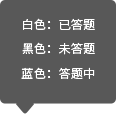

[01:10.69]Good morning, everyone.
[01:11.36]In the last few lectures I've been dealing with business finance, but now I'm going to move on to business systems.
[01:20.20]And in today's lecture I'm going to talk about what can go wrong when businesses try to copy their own best practices.
[01:28.79]Once a business has successfully introduced a new process - managing a branch bank, say, or selling a new product - the parent organisation naturally wants to repeat that success, and capture it if possible on a bigger scale.
[01:46.92]The goal, then, is to utilise existing knowledge and not to generate new knowledge.
[01:54.60]It's a less glamorous activity than pure innovation, but it actually happens more often, as a matter of fact.
[02:03.30]However, surprisingly, getting things right the second time is not necessarily any simpler than it was the first time.
[02:12.40]Now, there's been a lot of research into how companies can repeat their previous successes, and it certainly hasn't been confined to the United States.
[02:23.44]It seems that most large industries are trying to repeat their own successes, and manage the knowledge they've acquired - but even so it has been shown that the overwhelming majority of attempts fail.
[02:39.46] A host of studies confirm this, covering a wide range of business settings: branch banks, retail stores, real estate agencies, factories, call centres ...
[02:55.70]to name but a few.
[03:00.68]So why do so few managers get things right the second or third time?
[03:11.52]Let's consider one reason for failure - placing too much trust in the people who are running the successful operation, the 'experts' shall we say.
[03:25.65]Managers who want to apply existing knowledge typically start off by going to an expert - such as the person who designed and is running a successful department store - and picking their brains.
[03:26.74] Now, this approach can be used if you want to gain a rough understanding of a particular system, or understand smaller, isolated problems.
[03:37.42]The trouble is, even the expert doesn't fully grasp the whole thing because when it comes to complex systems, the individual components of the process are interwoven with one another.
[03:50.73]The expert never has complete access to the necessary information.
[03:55.53]And the situation's complicated even further by the fact that experts are usually not aware of their own ignorance.
[04:05.50]The ignorance can take various forms.
[04:08.70]For instance, a lot of details of the system are invisible to managers.
[04:13.28] Some may be difficult to describe -learned on the job and we" known by workers perhaps, but impossible to describe in a way that's helpful.
[04:24.74]And there are some things that people know or do that they're not even aware of.
[04:37.74]Now, let's consider two types of mistake that can occur when a manager actually starts to set up a duplicate system to replicate a successful process.
[04:48.66]Firstly, perhaps he forgets that he was just trying to copy another process, and starts trying to improve on it.
[04:58.68]Another mistake is trying to use the best parts of various different systems, in the hope of creating the perfect combination.
[05:08.77]Unfortunately, attempts like these usually turn out to be misguided and lead to problems.
[05:17.60]Why?
[05:18.90]Well, for various reasons.
[05:20.97]Perhaps there weren’t really any advantages after all, because the information wasn't accurate.
[05:28.13]Or perhaps the business settings weren't really comparable.
[05:32.73]More typically, the advantages are real enough, but there are also disadvantages that have been overlooked.
[05:42.61]For example, the modifications might compromise safety in some way.
[05:49.10]So, what's the solution?
[05:52.11]Well, I don't intend to suggest that it's easy to get things right the second time ...
[05:59.20]it's not.
[06:00.19]But the underlying problem has more to do with attitudes than the actual difficulty of the task, and there are ways of getting it right.
[06:11.11]These involve adjusting attitudes, first of all...
[06:16.26]being more realistic and cautious really.
[06:20.73]Secondly, they involve exerting strict controls on the organisational and operational systems.
[06:30.40]And this in turn means copying the original as closely as possible.
[06:36.14]Not merely duplicating the physical characteristics of the factory, but also duplicating the skills that the original employees had.
[06:47.11]Reliance on a template like this offers the huge advantage of built-in consistency.

Complete the notes below.
Write ONE WORD ONLY for each answer.
Setting up systems based on an existing process
Two mistakes
Manager tries to:
• improve on the original process
• create an ideal from the best parts of several processes
Cause of problems
• information was inaccurate
• comparison between the business settings was invalid
• disadvantages were overlooked, e.g. effect of changes on
Solution
• change
• impose rigorous
• copy original very closely:
- physical features of the
- theof original employees

